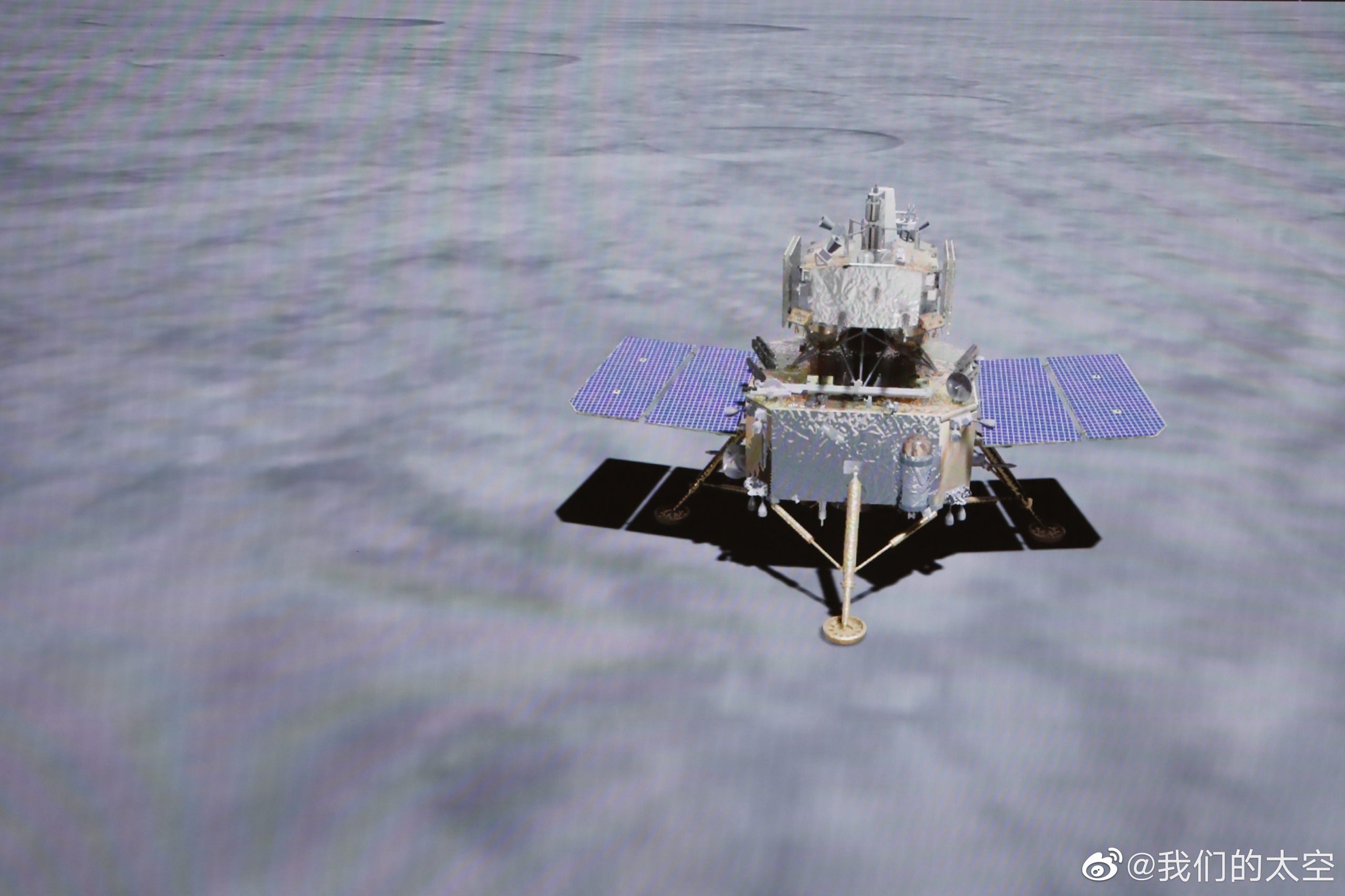
CNSA
- A capsule from China’s Chang’e-5 lunar probe just landed in Mongolia, carrying 4.4 pounds of moon-rock samples.
- It’s the first time any nation has returned lunar samples to Earth since 1976.
- Visit Business Insider’s homepage for more stories.
A Chinese space capsule has landed back on Earth carrying the first rocks collected from the moon since the 1970s.
The Chang’e-5 capsule touched down in northern China on Wednesday afternoon ET, in a landing site in the autonomous region of Inner Mongolia, according to the state-owned Xinhua News Agency. The landing concluded the latest of China’s ambitious moon-exploration missions and marked the first time China has ever brought moon rocks back to Earth.
A video from Xinhua News Agency showed what appeared to be the Chang’e-5 capsule resting on the ground within a cordoned-off zone, as people hurried toward it.
—China Xinhua News (@XHNews) December 16, 2020
The Chang’e-5 mission launched on the afternoon of November 23. Ten days later, a robotic arm on the mission’s moon lander drilled about 6 feet into the lunar surface to collect rock and dust. It was digging in a previously unexplored area: a volcanic mound on the moon called Mons Rümker. The material it gathered is likely to provide new information about the moon’s past and history of volcanic activity.
The arm dug for 19 hours, then transferred the sample to an ascent module on top of the lander. With the sample secure, that module then lifted off the lunar surface to rendezvous with an orbiter spacecraft that had remained circling the moon. The ascender then transferred its sample into the orbiter’s return capsule.
Following the delicate, multi-step maneuver, the orbiter and capsule remained in the moon's orbit for nearly a week, then began the journey back to Earth. The two components separated in Earth's orbit, after which the capsule orchestrated "a series of complicated maneuvers" to fall to its landing site, the Chinese National Space Administration said on its website.
The 4.4-pound sample the capsule brought back could reveal whether the moon displayed volcanic activity as recently as 1.2 billion years ago - that's how old scientists estimate the Mons Rümker plain to be.
Such a discovery that could "rewrite the history of the moon," Xiao Long, a planetary geologist at the China University of Geosciences in Wuhan, told Nature in November.
So far, scientists have only been able to study samples from lunar regions that are 3 billion years old or more, so their knowledge of the moon's volcanic activity ends around then. The moon rocks should help scientists estimate this lunar region's age more precisely.
The last time any country collected lunar rocks was in 1976, when the Soviet Union's last Luna mission returned to Earth.
Dit artikel is oorspronkelijk verschenen op z24.nl
